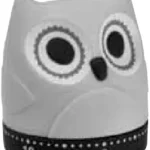

Instruction manual
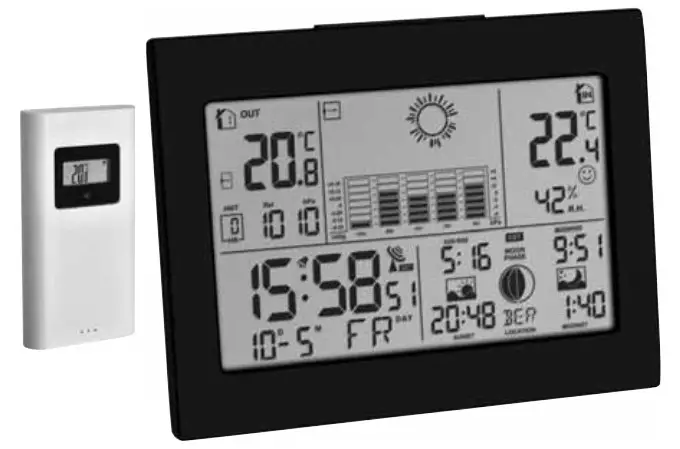
www.tfa-dostmann.de/en/service/downloads/instruction-manuals
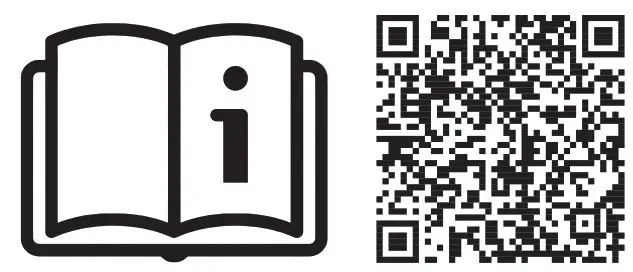
Kat. Nr. 35.1155
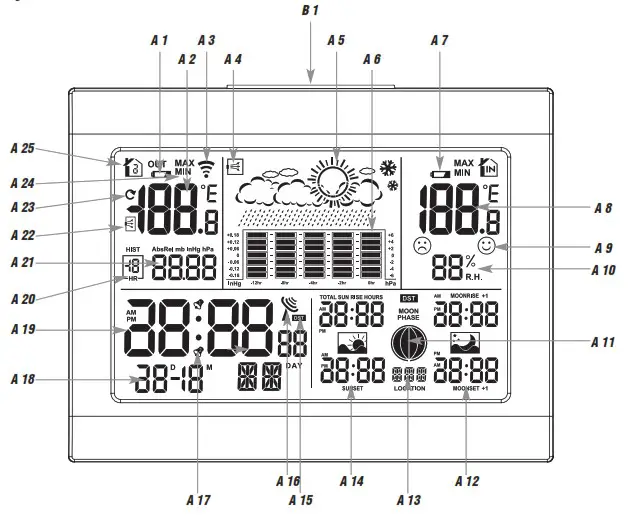
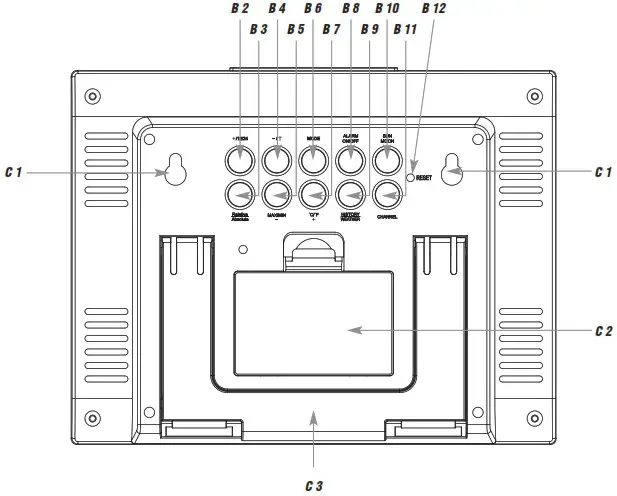
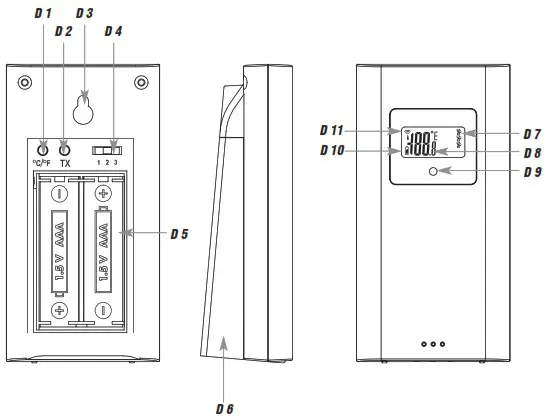
HORIZON – Wireless weather station
Thank you for choosing this instrument from TFA.
Before you use this product
- Please make sure you read the instruction manual carefully. This information will help you to familiarize yourself with your new device, to learn all of its functions and parts, to find out important details about its first use and how to operate it, and to get advice in the event of a malfunction.
- Following and respecting the instructions in your manual will prevent damage to your instrument and loss of your statutory rights arising from defects due to incorrect use.
- We shall not be liable for any damage occurring as a result of non-following of these instructions. Likewise, we take no responsibility for any incorrect readings or for any consequences resulting from them.
- Please take particular note of the safety advice!
- Please keep this instruction manual safe for future reference.
Delivery contents
- Weather station (base station)
- Outdoor transmitter (Cat.-No. 30.3242.02)
- Instruction manual
Range of application and all the benefits of your new instrument at a glance
- Qutdoor temperature wireless (433 MHz), distance range up to 60 m (open field), with trend indicator
- Expandable up to 3 outdoor transmitters, also for the temperature control of remote rooms, e.g. children’s room, wine-cellar etc.
- Indoor temperature and humidity with comfort level indicator
- Maximum/ minimum values
- Weather forecast with symbols and atmospheric pressure trend
- Absolute or relative atmospheric pressure
- Bar graph indication of atmospheric pressure for the last 12 hours
- Radio-controlled clock with date and weekday
- Alarm with two alarm times and snooze function
- Time of rising and setting of sun and moon (150 European cities on call)
- Indication of the actual moon phase
- Backlight
- Wall mounting or table stand
For your safety
- This product is exclusively intended for the range of application described above. It should only be used as described within these instructions.
- Unauthorized repairs, alterations or changes to the product are prohibited. A
![]() Caution! Risk of injury:
Caution! Risk of injury:
- Keep these devices and the batteries out of reach of children.
- Batteries contain harmful acids and may be hazardous if swallowed. If a battery is swallowed, this can lead to serious internal burns and death within two hours. If you suspect a battery could have been swallowed or other- wise caught in the body, seek medical help immediately.
- Batteries must not be thrown into a fire, short-circuited, taken apart, or recharged. Risk of explosion!
- Low batteries should be changed as soon as possible to prevent damage caused by leaking. Never use a combination of old and new batteries together, nor batteries of different types. Wear chemical-resistant protective gloves and safety glasses when handling leaking batteries.
![]() Important information on product safety!
Important information on product safety!
- Do not expose the device to extreme temperatures, vibrations, or shocks. Protect it from moisture.
- The outdoor transmitter is splash proof, but not watertight. When placed outdoors, choose a dry place for the transmitter.
Elements
Base station (Receiver)
A: LCD display (Fig. 1):
| A1: Battery symbol for the transmitter A3: Reception symbol for the transmitter A5: Weather forecast with symbols A6: Bar graph indication of atmospheric pressure for the last 12 hours. A7: Battery symbol for the base station |
A2: Outdoor temperature A4: Atmospheric pressure trend A8: Indoor temperature |
| A9: Comfort level indicator of indoor climate A11: Moon phase A13: Location A15: Daylight Saving Time symbol A17: Alarm symbol 1+2 A19: Time with seconds A21: Absolute or relative atmospheric pressure A23: Circle symbol for the alternating channel A25: Channel number |
A10: Indoor humidity A12: Moonrise/moonset time A14: Sunrise/Sunset time A116: DCF reception icon A18: Date and weekday A20: History values of atmospheric pressure A22: Outdoor temperature tendency A24: Symbol for MAX/MIN |
| B: Buttons (Fig. 1+2): B14: SNOOZE/LIGHT button B3: Relative/Absolute button B5: MAX/MIWN/- button B7: °C/°F/+ button B9: HISTORY/WEATHER button B11: CHANNEL button |
B2: +/12/24 button B4: -/ B6: MODE button B 8: ALARM ON/OFF button B10: SUN MOON button B12: RESET button |
C: Housing (Fig. 2):
C1: Wall mounting holes
C2: Battery compartment
C3: Stand (fold out)
D: Transmitter (Fig. 3):
| D1: °C/°F button D3: Wall mounting hole D5: Battery compartment D7: Radio symbol channel 1,2,3 D9: Transmission indication LED D14: Transmission signal |
D2: TX button D4: 123 switch for channel selection D6: Stand D8: Outdoor temperature display D10: Battery symbol for the transmitter |
Getting started
Insert the batteries
- Remove the protective films from the display of the base station and the transmitter.
- Open the battery compartment of the transmitter and receiver and place both instruments on a desk with a dis- tance of approximately 1.5 meter. Avoid being close to possible sources of interference such as electronic devices and radio equipment.
- Insert at first two new batteries 1,5 V AAA in the battery compartment of the transmitter and immediately after- wards three new batteries 1,5 V AAA in the battery compartment of the base station. Make sure the polarities are correct.
- After a successful installation close the battery compartments carefully.
Weather symbol setting
- The device will alert you with a beep and all segments will be displayed for a short moment.
- After batteries were inserted or when holding HISTORY/WEATHER button in normal mode for 3 seconds, the weather symbol will be flashing for 20 seconds. Enter the actual weather during this time by pressing the MAX/MIN/– or °C/°F/+ button.
- Press the HISTORY/WEATHER button to confirm the setting.
Reception of outdoor temperature
- After the batteries are inserted, the outdoor values will be transmitted to the base station. The reception symbol for the transmitter flashes.
- If the reception of the outdoor values fails, “- -” appears on the base station display. Check the batteries and try it again. Check if there is any source of interference.
- You can also start the outdoor transmitter search manually later on (for example when the outdoor transmitter is lost or the batteries are changed). Press and hold the CHANNEL button for three seconds. The last registered transmitter (channel) will be canceled.
- Press the TX button on the outdoor transmitter. The transmission of the outdoor data takes place immediately and a successful reception will be confirmed by a beep tone of the base station.
Radio-controlled time reception
- After 3 minutes the clock will then scan the DCF (radio-controlled clock) frequency signal. The DCF reception symbol will be flashing. When the time code is successfully received after 3-10 minutes, the radio-controlled time, the date, the day of the week, and the DCF symbol will be shown steadily on the display. The clock automatically scans the time signal at 1 a.m., 2. a.m., 3 a. m. and 4 a.m. every day to maintain accurate timing. If the reception fails, it will repeat again at 5.00 a.m. and 6.00 a.m (less disturbances).
- You can also start the initialization manually. Press and hold the -/
 button for 3 seconds. The DCF reception symbol will be flashing.
button for 3 seconds. The DCF reception symbol will be flashing. - Hold the -/
 button for 3 seconds again to stop scanning the DCF time signal. The DCF reception symbol dis- appears.
button for 3 seconds again to stop scanning the DCF time signal. The DCF reception symbol dis- appears. - If the clock cannot detect the DCF-signal (e.g. due to interference, transmitting distance, etc.), the time can be set manually. The clock will then work as a normal quartz clock. (see: Setting of the clock, calendar, and location).
Note on radio-controlled time
The time base for the radio-controlled time is a caesium atomic clock operated by the Physikalisch Technische Bundesanstalt based in Braunschweig (Brunswick), Germany. It has a time deviation of less than one second in one million years. The time is coded and transmitted from Mainflingen near Frankfurt via the frequency signal DCF-77 (77.5 kHz) and has a transmitting range of approximately 1,500 km. Your radio clock receives the signal, converts it and always shows the exact time. The adjustment to Daylight Saving Time (summer/winter time) is automatic. In Daylight Saving Time DST is shown on the display. The reception quality depends mainly on geographic location. Normally there should be no reception problems within a 1,500 km radius around Frankfurt.
Therefore, please note the following steps:
- The recommended distance to any interfering sources like computer screens or TV sets Is at least 1.5 – 2 meters.
- Within concrete walls (reinforced with steel) such as basements, the received signal is naturally weakened. In extreme cases, please place the unit close to a window to improve reception.
- During nighttime, the atmospheric interference is usually less severe and reception is possible in most cases. A single daily reception is adequate to keep the accuracy deviation under 1 second.
Operation
- Important:
Buttons will not function while scanning DCF or outdoor temperature signal unless they are well received or stopped manually. - During the operation, all successful settings will be confirmed by a brief beep tone.
- The device will automatically quit the setting mode if no button is pressed for 15 seconds.
- Press and hold the +/12/24 or -/
 button in setting mode for fast mode.
button in setting mode for fast mode.
Setting of the clock, calendar, and location
- Press and hold the MODE button for 3 seconds. The time zone correction (00 default) flashes on the display. The time zone correction is needed for countries where the DCF signal can be received but the time zone is different from the DCF time (e.g. +1=one hour plus). Press the +/12/24 or -/
 button to make the time zone correction (+12/-12).
button to make the time zone correction (+12/-12). - Press the MODE button to make the settings in the following sequence: Hours, minutes, seconds, year, month, day, day-of-week language, country, and city. Press the +/12/24 or -/ % button to adjust the settings.
- Day-of-week language: German (GE), French (FR), Spanish (ES), Italian (IT), Dutch (NE), Danish (DA), Russian (RU), and English (EN).
- For the selection of your location please see the included table at the end of the manual.
- The manually set time is overwritten once the DCF time signal is successfully received.
12 or 24-hour system
- Press the +/12/24 button in normal mode to choose 12 HR or 24 HR system. In the 12 HR system AM or PM (after 12 o’clock) appears on the display.
Alarm clock function
- You can select your respective alarm by pressing the MODE button:
1. Alarm1
2. Alarm 2
- Set the alarm time in the respective alarm mode. Hold the MODE button for 3 seconds. The hour digits flash. Press the +/12/24 or -/
 < button to set the desired time. Confirm with the MODE button. Set the minutes in the same way.
< button to set the desired time. Confirm with the MODE button. Set the minutes in the same way. - To activate and deactivate the alarm function press the ALARM ON/OFF button in the respective alarm mode. “on” or “oF” appears on the display next to the alarm time.
- When the alarm is activated, the alarm starts to ring when the set alarm time is reached.
- Press any button (except SNOOZE/LIGHT) and the alarm will stop.
- If the alarm is not stopped manually, the ascending alarm tone automatically turns off after two minutes and it will be reactivated at the same set time on the following day.
- When the alarm rings, press the SNOOZE/LIGHT button and the snooze function is activated. The backlight turns on for a short period.
- The alarm symbol flashes.
- The alarm will be interrupted for 5 minutes.
Thermometer and hygrometer
Display change °C/°F
- Press the °C/°F/+ button to select the temperature display of the base station in °C (Celsius) or °F (Fahrenheit) as the temperature unit.
- Press the °C/°F button on the transmitter to change the temperature unit on the sensor display from °C to °F.
Trend arrow
- The trend arrow on the display will show if the outdoor temperature is increasing, steady or decreasing.
Comfort level indicator of indoor climate
- On the display appears a smiley to indicate the comfort level:
| < 40% DRY | 40 – 60% COMFORT | > 60% HUMID | |
| < 20°C | / | ||
| 20 -26 °C | |||
| > 26 °C | / |
Maximum/Minimum function
- Press the MAX/MIN/– button to show the maximum (MAX) values of temperature and humidity of the indoor transmitter and outdoor temperature. Press the MAX/MIN/- button again to show minimum (MIN) values.
- If you press and hold the MAX/MIN/- button for 3 seconds, the values are deleted and reset to the actual value.
Atmospheric pressure
Weather forecast symbols
- There are 5 different weather symbols (sunny, slightly cloudy, cloudy, rainy, heavy rain) and 3 different symbols for the trend of atmospheric pressure (increasing, steady, decreasing). A snow crystal is shown if rain is forecasted and the outdoor temperature is under 0°C.
- The weather forecast relates to a range of 12 to 24 hours and indicates only a general weather trend. For example, if the current weather is cloudy and the rain icon is displayed, it does not mean the product is faulty because it is not raining. It simply means that the air pressure has dropped and the weather is expected to get worse but not necessarily rainy.
Absolute and relative atmospheric pressure
- press the Relative/Absolute button to select Absolute (“Abs”) or Relative (“Rel”) pressure display.
- Absolute pressure is the actual atmospheric pressure measured by the main unit.
- The relative atmospheric pressure is referred to the sea level’s pressure and has to be adjusted first to your local altitude. Ask for the current relative atmospheric pressure of your home area (local weather service, www). Hold am the Relative/Absolute button for 3 seconds. Press MAX/MIN/- or °C/°F/+ button to adjust the respective value. Confirm the setting with the Relative/Absolute button.
- Press the HISTORY/WEATHER button to view the past 12 hours barometric pressure history. The hour is indicated on the display (0, -1, 2…-12).
- Press and hold the °€/°F/+ button for three seconds to select inHg or mb / hPa as the unit for barometric pressure.
Development of atmospheric pressure
- The bar graph indication of atmospheric pressure shows the last 12 hours.
Sun and moon
Sunrise/sunset and moonrise/moonset time
- After setting the local country and the city in the setting mode (see 7.1), the main unit calculates the time for the sunrise/sunset and moonrise/moonset.
- Press the SUN MOON button to display the day length.
- Hold the SUN MOON button for 3 seconds to enter the quick checking mode. The country digits blink and you can select your setting by the +/12/24 or -/ 7 button. Enter city, year, month, and day which you would like to check by pressing the SUN MOON button. Press the +/12/24 or -/ 7 button to adjust the settings. Confirm with the SUN MOON button.
- The location digits keep flashing to indicate the main unit is still in quick checking mode. Press the SUN MOON button to return to normal mode.
- The instrument will quit the quick checking mode and return to the home location if there is no button used within 15 seconds.
- If moonrise or moonset occur at the next day “MOONRISE +1” or “MOONSET +1” will be displayed.
- If there is no moonrise or moonset on that day, “-:–” will be displayed.
Moon phase
The moon phase of each day is shown on the display:

| A: New Moon D: Waxing Gibbous G: Last Quarter |
B: Waxing Crescent E: Full Moon H: Waning Crescent |
C: First Quarter F: Waning Gibbous |
Backlight
- Press the SNOOZE/LIGHT button. The backlight turns on for 3 seconds.
Additional outdoor transmitters
- For having more than one external transmitter, select different channels for each sensor with the switch 1 23. The new transmitter will be received automatically by the base station.
- The temperature measured by the sensor is shown on the display of the base station. If you have installed more than one transmitter, press the CHANNEL button to change between the outdoor transmitters.
- You can also choose an alternating channel display. Press the CHANNEL button. After the last registered channel, a circle symbol will appear (display
 ) for channel 1,
) for channel 1,  for channel 2, or
for channel 2, or  for channel 3 and
for channel 3 and  for alternating channel).
for alternating channel). - To cancel an unused channel hold the CHANNEL button for 3 seconds. If a new channel is received it will be auto- matically registered again.
Positioning and mounting of the base station and the transmitter
- When placed outdoors, choose a shady and dry place for the transmitter. Direct sunlight may trigger incorrect measurement and continuous humidity damages the electronic components needlessly.
- Place the base station in any room of the house. Make sure to avoid the vicinity of any source of interference such as computer screens, TV sets, or solid metal objects.
- Once the desired location is chosen, check whether the transmission from the transmitter to the base station is possible (transmission range of up to 60m in open areas). Within solid walls, especially ones with metal parts, the transmission range can be reduced considerably.
- If necessary choose another position for the outdoor transmitter and/or receiver.
- If the transmission successful, you can wall-mount the base station and the outdoor transmitter with the suspension device.
Care and maintenance
- clean the devices with a soft damp cloth. Do not use solvents or scouring agents. Protect it from moisture.
- Remove the batteries from all devices if you do not use the products for a long period of time.
- Store the devices ina dry place.
Battery replacement
- As soon as the battery symbol will appear on the display of the base station beside the outdoor temperature or on the display of the outdoor transmitter, charge the batteries of the outdoor transmitter.
- Change the batteries of the base station, when the battery symbol appears on the indoor values display.
- Please note:
When the batteries are charged, the contact between the transmitter and the receiver must be restored – so always insert new batteries into both devices or start the manual search for the transmitter.
| Problem | Solution |
| No indication on the base station/transmitter | • Ensure the batteries’ polarities are correct • Change the batteries |
| No transmitter reception Display “—” for channel 1/2/3 |
• No transmitter installed • Check the outdoor transmitter’s batteries (do not use rechargeable batteries!) • Restart the transmitter and the base station according to the manual • Start the outdoor transmitter manual search • Choose another place for the outdoor transmitter and/or the base station • Reduce the distance between the outdoor transmitter and the base station • Check if there is any source of interference |
| No DCF reception | • Press and hold the —/ • Wait for an attempt reception during the night • Choose another place for your product Set the clock manually • Check if there is any source of interference • Restart the instrument according to the manual |
| Incorrect indication | • Press the RESET button • Change the batteries |
Waste disposal
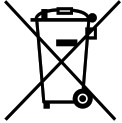 This product has been manufactured using high-grade materials and components which can be recycled and reused.
This product has been manufactured using high-grade materials and components which can be recycled and reused.
Never dispose of empty batteries and rechargeable batteries with ordinary household waste.
As a consumer, you are required by law to take them to your retail store or to an appropriate collection site depending on national or local regulations in order to protect the environment.
The symbols for the contained heavy metals are: Cd=cadmium, Hg=mercury, Pb=lead
 This product is labelled in accordance with the EU Waste Electrical and Electronic Equipment Directive (WEEE).
This product is labelled in accordance with the EU Waste Electrical and Electronic Equipment Directive (WEEE).
Please do not dispose of this product in ordinary household waste. As a consumer, you are required to take end-of-life devices to a designated collection point for the disposal of electrical and electronic equipment, in order to ensure environmentally-compatible disposal.
Specifications
| Measuring range indoor | |
| Temperature Humidity Atmospheric pressure |
0 °C… +50 °C (+32…+122 °F) 20 %rH…95 %rH 900hPa – 1050hPa |
| Measuring range outdoor Temperature | -20 °C… +60 °C (-4 °F…+140 °F) |
| Range | max. 60 m (open field) |
| Transmission frequency | 433 MHz |
| Maximum radio-frequency power | < 10mW |
| Power consumption | Base station: 3 x 1,5 V MA (Batteries not included) Outdoor transmitter: 2 x 1,5 V AM batteries (Batteries not included) Use alkaline batteries |
| Base station | |
| Dimensions | 158 x 26 (51) x 123 mm |
| Weight | 224 g (device only) |
| Outdoor transmitter | |
| Dimensions | 50 x 30 x 97 mm |
| Weight | 45 g (device only) |
No part of this manual may be reproduced without written consent of TFA Dostmann. The technical data are correct at the time of going to print and may change without prior notice. The latest technical data and information about this product can be found in our homepage by simply entering the product number in the search box.
EU Declaration of conformity
Hereby, TFA Dostmann declares that the radio equipment type 35.1155 is in compliance with Directive 2014/53/EU. The full text of the EU declaration of conformity is available at the following Internet address: www.tfa-dostmann.de/service/downloads/ce
E-Mail: [email protected]
TFA Dostmann GmbH & Co.KG, Zum Ottersberg 12, D-97877 Wertheim, Germany
City List
| Great Britain | GB |
| Aberdeen | ABD |
| Belfast | BEL |
| Birmingham | BIR |
| Bristol | BRI |
| Edinburgh | EDI |
| Glasgow | GLA |
| London | LON |
| Manchester | MAN |
